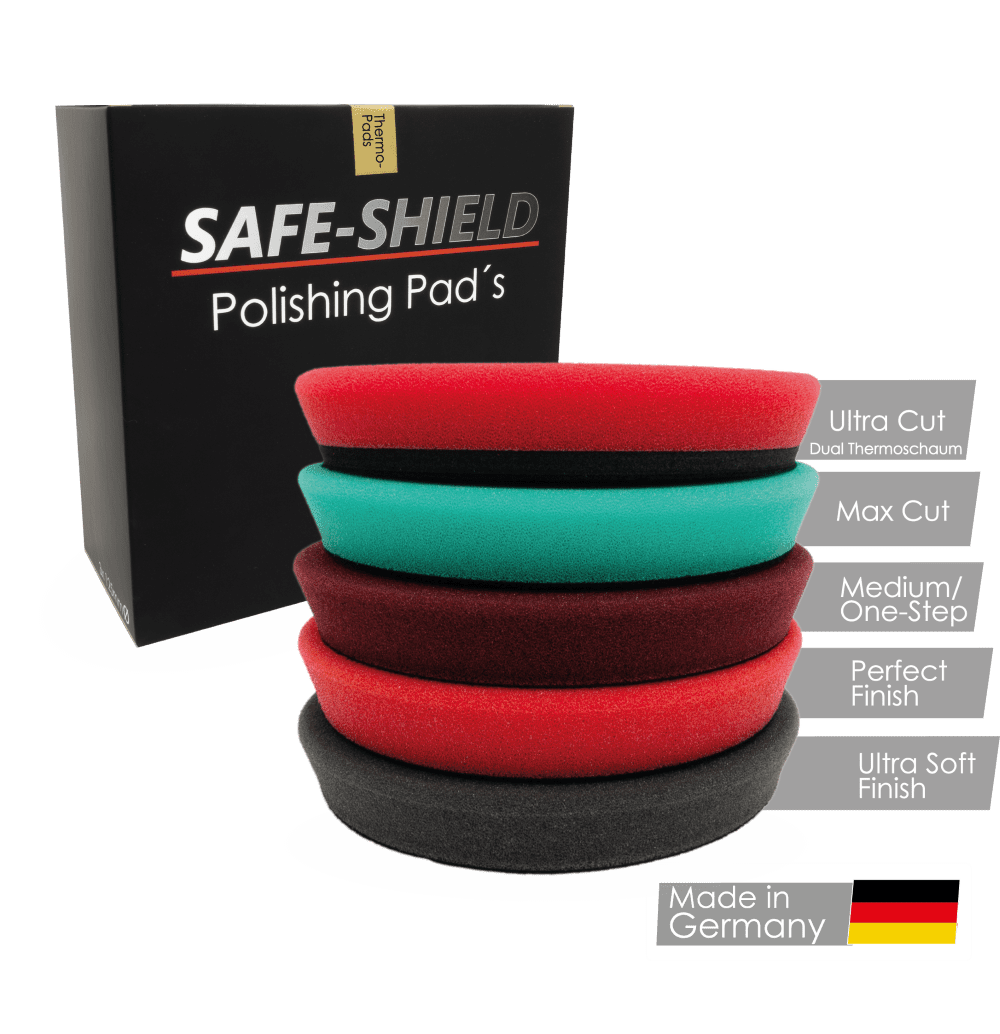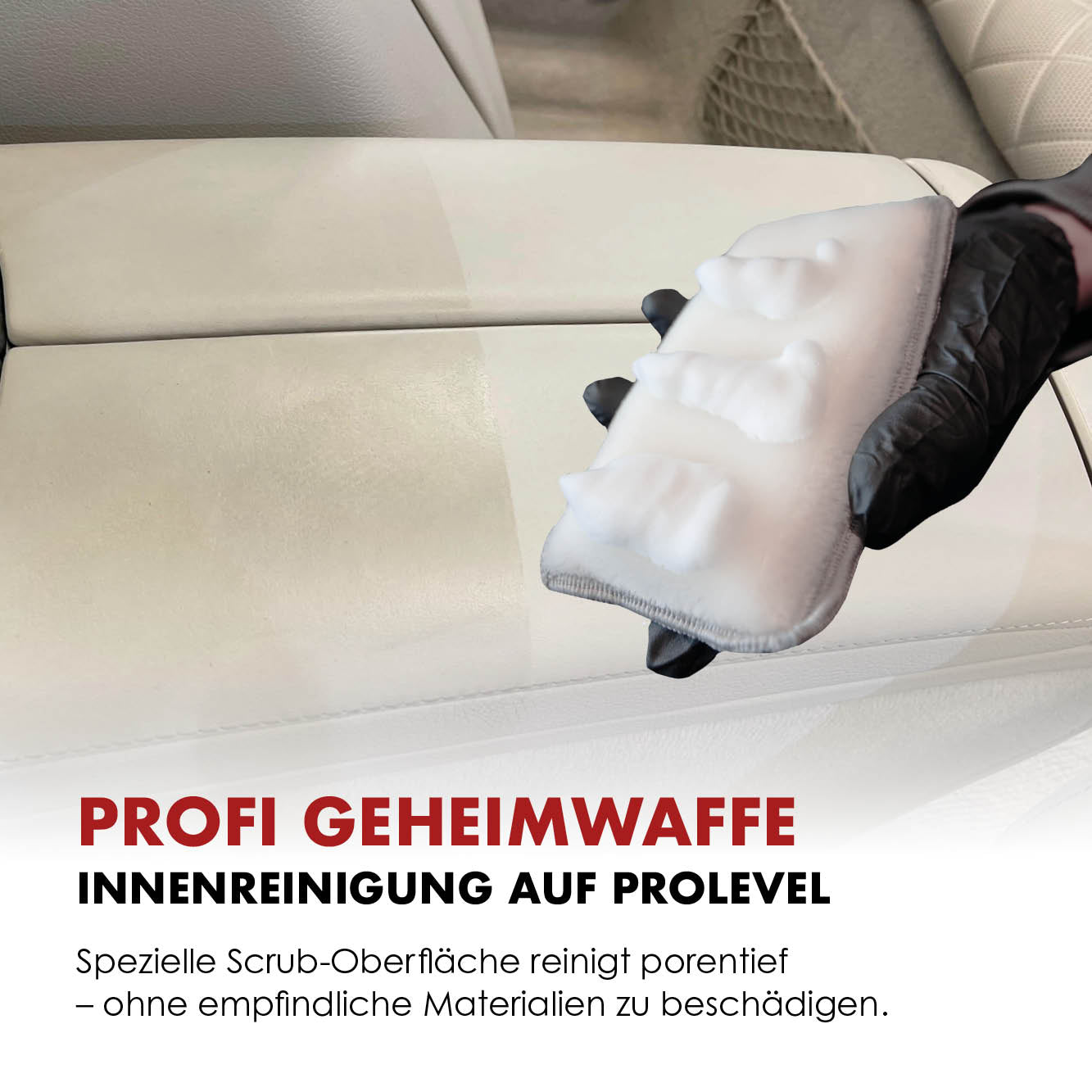What is the difference between waxing and polishing?
Discover the art of car care: waxing and polishing are the magic words that decide between an ordinary vehicle shine and a breathtaking one. While polishing restores your car's mirror shine by removing fine scratches, waxing gives your paint a protective coat that protects it from the whims of nature. Immerse yourself in the world of car care, where every detail counts, and find out how these two procedures not only make your vehicle shine, but also protect it in the long term. Get ready to reveal the secrets behind the perfect car paint!
Basics of car polishing
What is polishing? Definition and goal of polishing
Polishing refers to the process of refining a car's surface and removing scratches, "holograms" and other imperfections from the paint. The aim of polishing is to give the vehicle a shiny and flawless finish by smoothing the top layer of the paint on a microscopic level. Unlike waxing, which adds a protective layer, polishing aims to improve and restore the paint surface itself.The polishing process: step-by-step instructions*
(*Rough guide to the process)
Preparation: Thoroughly clean your vehicle to remove all dirt, and dry it off. Assess the condition of the paint to decide how thoroughly it needs to be polished.
Masking: Use suitable painter’s tape to protect areas you don’t want to polish, such as trim and window seals.
Applying polish: Choose a suitable polish for your paint’s condition and apply it sparingly to the pad.
Polishing: Start at a low speed to spread the product, then increase the speed. Work in sections and apply moderate pressure.
Check: Inspect the results after each section and repeat if necessary.
Aftercare: Remove any residue with a microfiber cloth and, if necessary, apply wax or sealant to protect the shine.
Tools and Materials for Polishing: Choosing the Right Polishing Compounds and Pads
Polishers: There are two main types – rotary polishers (for experienced users) and orbital polishers (suitable for beginners and advanced users).
Polishing Pads: Choose between foam, microfiber, or wool pads, depending on the type of polish and desired finish. Foam pads are available in different degrees of hardness and are suitable for most polishing tasks.
Polishing compounds: There is a wide range of polishing compounds, from coarse abrasive pastes for deep scratches to fine polishes for finishing. Start with a fine polish if only light corrections are needed and progress to a stronger abrasive compound if necessary.
Microfiber cloths: For removing polishing residue and for final polishing.
Basics of car waxing
Car waxing is a crucial step in vehicle care that not only protects the paint but also ensures a shiny finish. In this guide, you'll learn all about the benefits of waxing and how to use it correctly.
What is waxing? Definition and goal of growth
Waxing is the process of applying a protective coating to the paint surface of a vehicle. This wax layer protects the paint from UV rays, road dirt, bird droppings and other harmful influences. The main goal of waxing is to preserve the paint and keep the vehicle looking shiny and new for longer.
H3: The waxing process: step-by-step instructions
Cleaning: Before applying the wax, the vehicle must be thoroughly washed and dried to ensure the surface is free of dirt and debris.
Preparation: If necessary, you should clean the paintwork to remove old layers of wax and stubborn dirt.
Wax application: Apply the wax in small sections using a soft applicator pad. Works in circular motions to ensure even coverage.
Polishing: After the wax has dried (note the curing time), polish it with a clean microfiber cloth until an even shine is achieved.
Inspection: Checks the vehicle for even shine and repeats the process in specific areas if necessary.
Tools and Materials for Growing: Overview
Liquid waxes: Ideal for simple and regular applications, offer good protection and shine.
Paste waxes: Long-lasting, ideal for vehicles exposed to strong environmental influences.
Spray waxes: Quick and convenient for intermediate applications, but with less protection compared to liquid or paste waxes.
Synthetic waxes: High durability and easy application, for long-lasting shine.
Differences between waxing and polishing
Waxing and polishing a vehicle are two basic car care procedures that are often confused. Both methods improve the appearance of your vehicle, but serve different purposes and produce different results. In this section we explain the main differences between these two processes.
Goals and Results: Comparison of the goals of waxing and polishing
Polishing is primarily performed to smooth the surface of the vehicle's paint by removing small scratches, swirl marks, and oxidation. The goal of polishing is to give the paint surface a shiny and uniform finish. Buffing often prepares the paint for waxing by creating a smooth base that can better absorb the wax.
Waxing, on the other hand, aims to protect the paintwork after polishing. Applying a layer of wax creates a protective barrier between the paint and environmental influences such as UV rays, dirt and water. The main goal of waxing is to protect and maintain shine, not to improve the paint surface itself.
When to use: When and why polishing or waxing is used
Polishing should be used if your vehicle's paint appears dull or has small surface irregularities. It is particularly useful before waxing to ensure that the polish is as smooth and uniform as possible so that the wax can work its best.
Waxing should be done regularly after polishing and every thorough car wash. It is a critical step to protect the paint and maintain its shine over time. Waxing is less dependent on the condition of the paint and more on the need to maintain the existing shine and protection.
Durability and Protection: How long the effects of waxing and polishing last
The durability of polishing depends on various factors, including vehicle use and exposure to environmental elements. Generally, a polished finish will remain shiny for several months to a year before further treatments may be necessary.
The protection period of waxing also varies depending on the type of wax used and the conditions the vehicle is exposed to. A high-quality layer of wax can provide protection for between two months and half a year. Regular waxing is crucial to permanently protect the paintwork and maintain the best possible appearance.
When and why polish?
Polishing a car is an essential step in vehicle care that is often underestimated. It plays a crucial role in restoring and maintaining the aesthetic condition of the vehicle's paint. In this section we explain why and when polishing is particularly important.
Meaning of polishing: scratch and oxidation removal
Polishing not only improves the shine but also rids the paint of imperfections such as scratches, swirl marks and oxidation. This damage, often caused by environmental influences, improper care or use, causes the paint to appear dull. By removing a thin layer of paint, polishing smooths the surface and restores the original shine, especially on older or heavily used vehicles.
Polishing not only improves the paint surface by smoothing and removing defects, but also optimizes the shine.
A well-polished vehicle reflects light evenly, creating an intense shine. The selection of high-quality polishing agents and pads as well as a consistent application technique are crucial for this result. This creates a consistently smooth and shiny painted surface that looks attractive and is additionally protected.
When polishing: Typical mistakes and how to avoid them
Applying too much pressure: One of the most common mistakes when polishing is applying too much pressure to the polishing machine. This can lead to uneven results and, in the worst case, damage the paint. Instead, use light, even pressure and let the device do the work.
Using the wrong polish: Not every polish is suitable for every type of paint or every level of damage. Using anything too abrasive on an otherwise good paint job can cause more harm than good. Choose the polish carefully based on the condition of your paint.
Overlooking areas: When polishing, it is important to proceed systematically and not to miss any areas. An unevenly polished vehicle can look blotchy and affect the overall appearance.
When growing: Common mistakes and how to avoid them
Applying to Dirty or Wet Surfaces: Wax should never be applied to a dirty or wet surface. Make sure the vehicle is thoroughly cleaned and completely dried before waxing to ensure optimal adhesion and effectiveness of the wax.
Using too much wax: More is not always better. Using too much wax can result in a greasy finish and make it difficult to remove excess wax. Apply the wax in thin layers and buff thoroughly.
Insufficient Curing Time: Another common mistake is not allowing the wax to cure sufficiently before polishing. Curing time can vary depending on the product, so it is important to follow the manufacturer's instructions for the best results.
Conclusion
Properly caring for your vehicle through polishing and waxing plays a crucial role in maintaining the paint condition and overall appearance of your car. Here are the key points we discussed, as well as some final recommendations:
Polishing not only serves to improve the aesthetics of the vehicle by creating shine, but it is also essential for removing surface defects such as scratches and oxidation. A correct polishing process improves the quality of the paint and ideally prepares the surface for waxing.
Waxing provides a protective layer that protects the paint from environmental influences and maintains the vehicle's appearance over the long term. Regular use of wax is crucial for the lasting protection and shine of the paint.
When polishing and waxing, it is important to avoid common mistakes such as applying too much pressure when polishing, using the wrong polishing compound, applying wax to dirty or wet surfaces, and using too much wax.
Recommendations for regular care:
Regular Polishing: Depending on the condition of your vehicle and environmental exposure, we recommend polishing approximately once a year to keep the paint in top condition.
Frequent Waxing: To ensure optimal protection and shine for your vehicle, waxing should be done every three to four months. However, this depends on the type of wax used and the specific conditions your vehicle is exposed to.
Careful selection of products: Choose high-quality polishing and waxing products that suit your vehicle type and the specific needs of your paint.
Proper Application Techniques: Follow best practices for polishing and waxing to ensure you get the best possible results and avoid damage to the paint.
By following these key points and recommendations, you can significantly extend the life and beauty of your vehicle's paint while increasing the resale value of your vehicle. Regular care is the key to a permanently shiny and protected vehicle.




Leave a comment
All comments are moderated before being published.
This site is protected by hCaptcha and the hCaptcha Privacy Policy and Terms of Service apply.